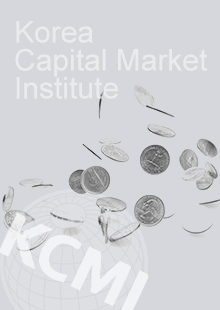Find out more about our latest publications

Customized Wealth Management with Style Investment
Survey Papers 07-01 Dec. 27, 2007
- Research Topic Capital Markets
- Page 106
- No other publications.
The demand for investment in customized asset management services is on the rise and will continue to rise in the midst of a shifting investment paradigm and rising importance of lifecycle management. This research introduces customized asset management services and proposes methods of employment in the Korean domestic indirect investment market.
Having different styles of investment (style investment) is necessary in order to propel customized asset management services that utilize MSA in the domestic capital markets. Style investments are classified by the characteristics of the object of investment. The most representative example of this is classifying by extent of value, extent of growth or if the size of capitalization is small, mid or large. MSA is a collection of sub-accounts operated by different styles or different management strategies. MSA permits investors to diversify risk while also receiving customized attention. MSA sponsored supervision prevents fund managers from style-drifting which raises investor protection.
To make MSA widely available, one must standardize the MSA process to lower costs and enable mass production. Through direct interaction with clients, MSA sponsors form customized portfolios reflecting the client’s demands. It then selects managers of each style, evaluates the results, and then controls for any discord arising from between the collection of client portfolios and the collection of styles. Any repetitive steps in this process can be automated, enabling mass production of the process.
The MSA can in actuality use customized asset management services when diverse style funds necessary for the management of each subaccount exist in the market. However, the majority of domestic funds not only are private management styles undisclosed but depending on market conditions, there are many cases where even promoted specialized styles deviate from their set style.
In order to examine the possibilities of establishing MSA in Korea, the styles of domestic funds were evaluated. The results show that at present the current classification system that sorts funds by stock ratio cannot give any meaningful information to investors. However, utilizing the RBSA method to classify fund styles not only made the examination possible but also the differences in the composites formed from this classification were statistically important. This allows financial firms to divide funds by style as MSA sponsors and through comparison and analysis of similar funds can provide more rational asset management services for investors.
As mentioned before, the potential demand for customized asset management service through the MSA is incredible. Analyzing the evidence reveals that, as MSA sponsors, financial firms can provide the kind ofstyle combinations demanded by investors. There are a few improvements that must take place in order for this kind of customized asset management services market to grow. First, in order for MSA to be used widely, a standard for publicizing results must be in place so that investors and sponsors can precisely compare the management styles between the copious number of funds. Second, it must be possible for sponsors to customize services to reflect the different demands of each investor with discretion. Third, an automated system should be established to cut the costs of providing MSA service. Fourth, in terms of management, when an open structureis selected, the universe of the types of funds that may be included in the MSA should be maximized.
Financially advanced countries already have substantial experience with customized asset management services. In this time where interest in customized asset management services is on the rise, financial firms must quickly grasp the importance of such services and develop the capacity to provide the range and scope of services that provide the risk and returns investors demand.